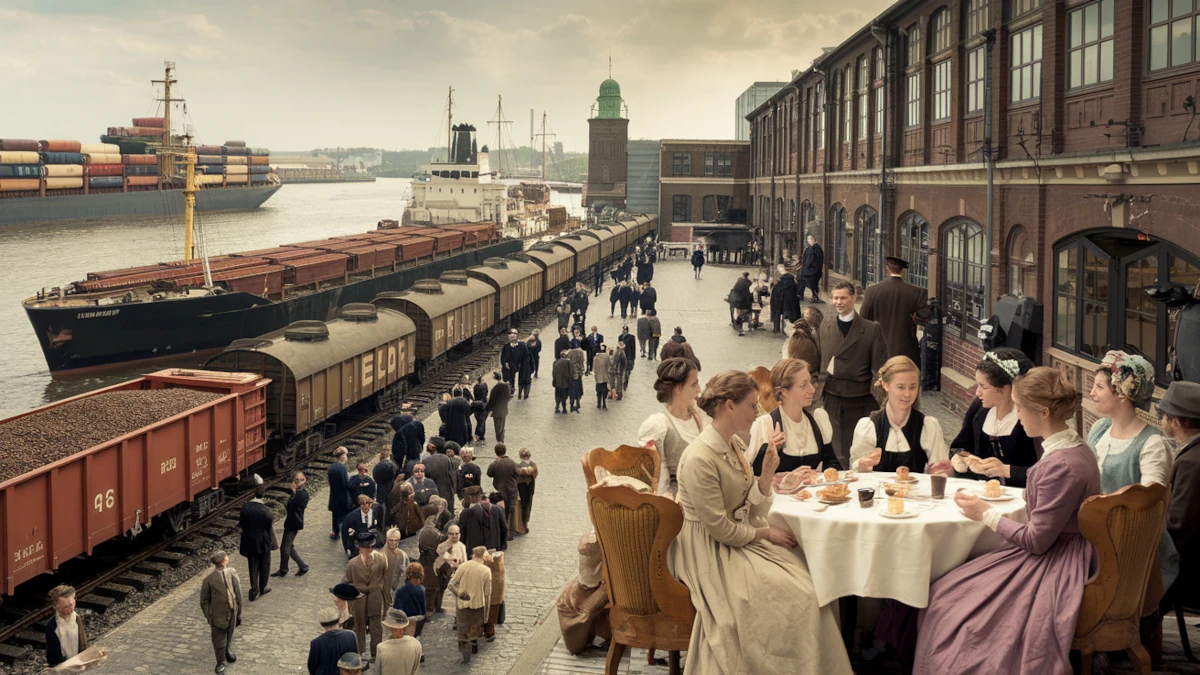Germany’s coffee history is a fascinating journey of cultural rituals, market growth, and groundbreaking innovations. Renowned as Europe’s largest coffee market, Germany boasts rich traditions like Kaffeeklatsch and revolutionary developments such as the filter coffee system. This article unpacks how Germany’s coffee culture evolved, its impact on global trends, and the innovations that cemented its place as a coffee hub.
Table of Contents
Germany’s Coffee Market Evolution
From Unification to Market Leadership
Germany’s unification in 1871 marked a turning point in its coffee journey. By the early 1900s, coffee became a staple across all regions and social classes, enjoyed with meals or as a stand-alone delight. Key developments included:
- Hamburg as Europe’s coffee port: By the late 19th century, Hamburg imported 90% of its coffee from Latin America, serving as Europe’s primary gateway for coffee.
- Innovative logistics: Coffee exchange platforms established in 1887 streamlined import and grading, with rail networks distributing beans nationwide.
Germany’s structured trade and logistical systems propelled it into a position of dominance, fostering a robust coffee economy.
Coffee Substitutes and Surrogates
Economic challenges and wars gave rise to coffee substitutes, satisfying demand during lean years:
- Consumption statistics: By 1914, Germany consumed 160 million kilograms of substitutes alongside 180 million kilograms of real coffee.
- Cultural adaptations: Substitutes like roasted chicory and grains became everyday alternatives, symbolizing resilience during difficult times.
Despite substitutes, coffee remained deeply ingrained in German life, evolving into an enduring cultural symbol.
The Rise of German Coffee Culture
Kaffeeklatsch: Coffee and Conversations
The Kaffeeklatsch, a gathering of women over coffee and cake, epitomized German social rituals. Originating in the 19th century, it showcased:
- Community bonding: A space for women to discuss daily life, strengthening relationships.
- Cultural relevance: Kaffeeklatsch became a hallmark of leisure and conviviality, influencing coffee gatherings worldwide.
Coffee Gardens and Family Gatherings
Coffee gardens emerged as vibrant social hubs, often set in parks where families enjoyed coffee amidst nature:
- Sunday rituals: Families brewed the finest coffee for gatherings, symbolizing love and hospitality.
- Affordable options: Some parks sold hot water, allowing less affluent visitors to brew their own coffee.
These practices cemented coffee’s role in fostering social interaction across Germany.
Innovations in Coffee Production and Distribution
Hamburg’s Coffee Exchange and Logistics
Germany’s efficiency in coffee production stemmed from early innovations:
- Grading systems: Women workers meticulously sorted coffee beans, ensuring quality.
- Distribution networks: Rail systems seamlessly transported coffee to grocers, building a reliable supply chain.
Such advancements established Germany as a model for coffee logistics.
The Emergence of Coffee Roasting Businesses
Industrial pioneers revolutionized coffee roasting and branding:
- Probat’s drum roasters (1880s): Enabled the mass production of roasted beans.
- Tchibo and Eduscho dominance: By the 1950s, Tchibo had become a household name, introducing in-store sampling and branded packaging.
These developments transformed Germany’s coffee industry, shaping it into a modern enterprise.
Melitta Bentz and the Filter Coffee Revolution
Invention of the Paper Filter
In 1908, Melitta Bentz, a Dresden housewife, revolutionized coffee brewing by inventing the paper coffee filter. Her innovation:
- Improved brewing: Allowed a cleaner and more flavorful extraction.
- Convenience: Replaced reusable cloths, simplifying cleanup for households.
Her family-founded company quickly gained traction, introducing the cone-shaped filter in the 1930s, a design still used today.
Impact on Modern Coffee Consumption
Germany’s preference for filter coffee persists, thanks to Bentz’s innovation:
- Global influence: The paper filter became a staple for home and commercial use worldwide.
- Cultural identity: Filter coffee remains a quintessential part of German coffee culture, underscoring its practicality and taste.
Conclusion
Germany’s journey from unification to becoming Europe’s largest coffee market is a testament to its rich cultural and industrial legacy. Traditions like the Kaffeeklatsch, innovations in logistics, and revolutionary contributions like Melitta Bentz’s filter system have solidified Germany’s enduring influence in the coffee world.
The cultural rituals and industrial advancements born in Germany continue to inspire and shape coffee consumption globally, cementing its status as a leader in the world of coffee.
